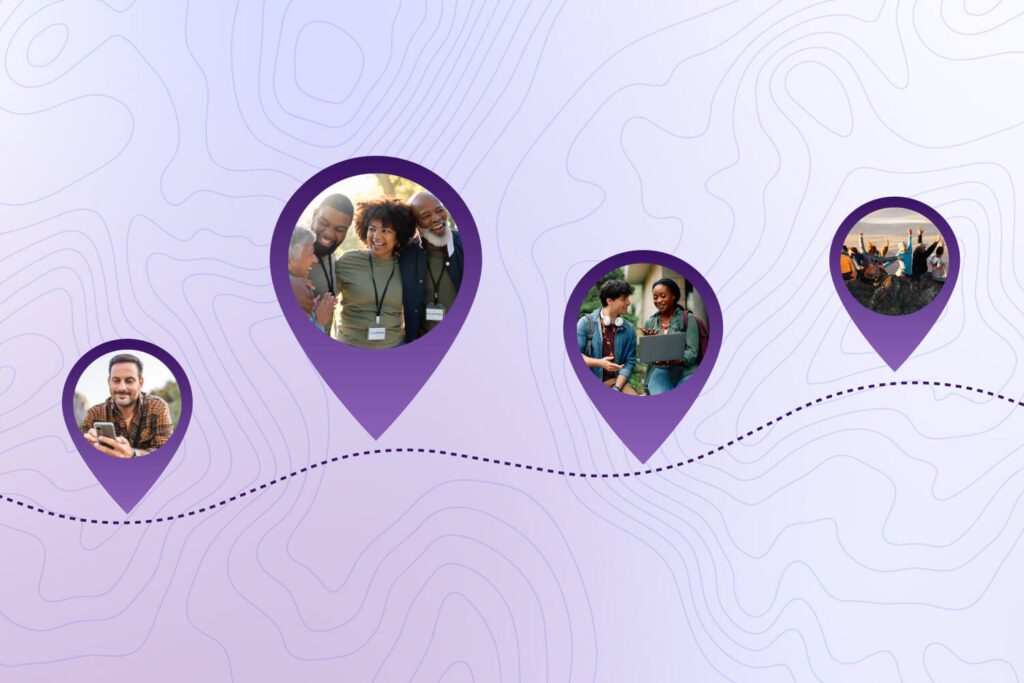Software integration basics and how they can benefit you

Ideally, your nonprofit organization’s software should be seamlessly connected, allowing data to flow back and forth. Your constituent relationship management (CRM) platform, ticketing software, volunteer platform, and fundraising platforms would communicate with one another, creating a 360-degree view of your data that’s easily accessible and endlessly functional, meaning you can do even more to meet, retain, and mobilize those who support your purpose.
However, for most nonprofits, there are often a few hiccups in their data flow. For instance, many have important information spread across several systems, which can lead to potential inefficiencies and data silos.
Thankfully, there is a solution. Software integrations can sync your tools, helping you make the most of all the information you’ve collected about your supporters.
What is software integration?
Nonprofit technology evolves quickly. Still, there are limits to what any one tool can do, especially for specialized platforms like auction software. This is where software integrations can make all the difference.
Using open APIs, developers can build integrations between tools. Integrations can be thought of as bridges between separate platforms that allow databases to “talk” to each other, creating one clean set of data for your donor outreach, volunteer management, reporting, and more.
Organizations can choose to set their data to flow in a single direction. Or, their integration can create a bidirectional exchange of information. You can even control the intervals at which your data syncs and updates. Ultimately, it’s all about matching the data configuration to meet the unique needs of your organization.
Building integrations creates a positive ripple effect across entire organizations, and the return on investment (ROI) more than justifies the work upfront. Configuring data to flow correctly across your tools can be an important step, whether your nonprofit is looking to make reporting more efficient, send more personalized supporter outreach thanks to more detailed and accessible data, or even see better fundraising outcomes thanks to an improved ability to craft data-driven donor appeals.
What are the benefits of software integrations?
There’s plenty to think about when it comes to the nuts and bolts of nonprofit fundraising and technology. However, keep in mind your nonprofit’s ultimate goal: fulfilling your cause and making a positive social impact. Integration can help with both fundraising and your ability to manage your programs.
When an integration is successfully implemented, nonprofits can expect to see improvements in three major areas:
- The functionality of your tech stack. Software integrations overcome and enhance the limited native capabilities of most software, allowing you to connect your data automatically and effortlessly.
- The financial return on your technology investments. Software integrations allow you to more efficiently connect to donors, which should increase your ROI.
- The impact on your purpose. By saving you time and money, integrations will free up resources and energy so you can focus on what really matters.
The possibilities within your CRM
Bonterra’s tools already come with a robust array of native integrations that can accelerate your fundraising pipeline. Just as native integrations can seamlessly improve your ROI, imagine what other integrations could do for your organization.
Your major gift officer may already be reaping the benefits of popular wealth screening tool integrations. But what about your volunteer or events staff? These members of your team can also use niche software and experience the benefits of having it integrated with your CRM.
As an example, here are three different types of integrations that might be worth considering:
- Point-of-sale (POS) tools. Today, POS software is commonly used by nonprofits to sell merchandise or event tickets. By seamlessly integrating your platforms, you’ll be able to identify which supporters are buying which products, allowing you to improve your marketing strategy.
- Ticketing and events tools. If you use an advanced ticketing software, an integration can help your staff easily bring attendees into your database to properly thank and nurture them. Automatically send contact details, attendance/purchase history, and membership information from your tools into your CRM.
- Peer-to-peer (P2P) tools. Strong peer-to-peer fundraising tools can do wonders for your fundraising. Centralizing supporter data in your CRM with an integration means you can ensure all those warm contacts are funneled immediately into your database and ready for cultivating.
A one-time integration investment will magnify the results of your best-in-class tools, almost immediately. Save your team time and work smarter not harder by investing in an integration.
Connect your platforms now
Integrations bring your data together, improving nearly every aspect of your nonprofit, from fundraising to program management. Assess your data needs and identify places where data may be disconnected or siloed. Then, reach out to technology consultants to discover how you can integrate your platforms.
Author bio
Anne Guillen, MPH, is a returning Peace Corps volunteer who served in Zambia and worked as a nonprofit impact director in East and West Africa for over five years. Since 2019, she has contributed to the nonprofit technology field working for fundraising and constituent relationship management (CRM) tech companies in an effort to promote and build more efficient and effective operation options for nonprofits.
READY TO GET STARTED?
Work with Bonterra



